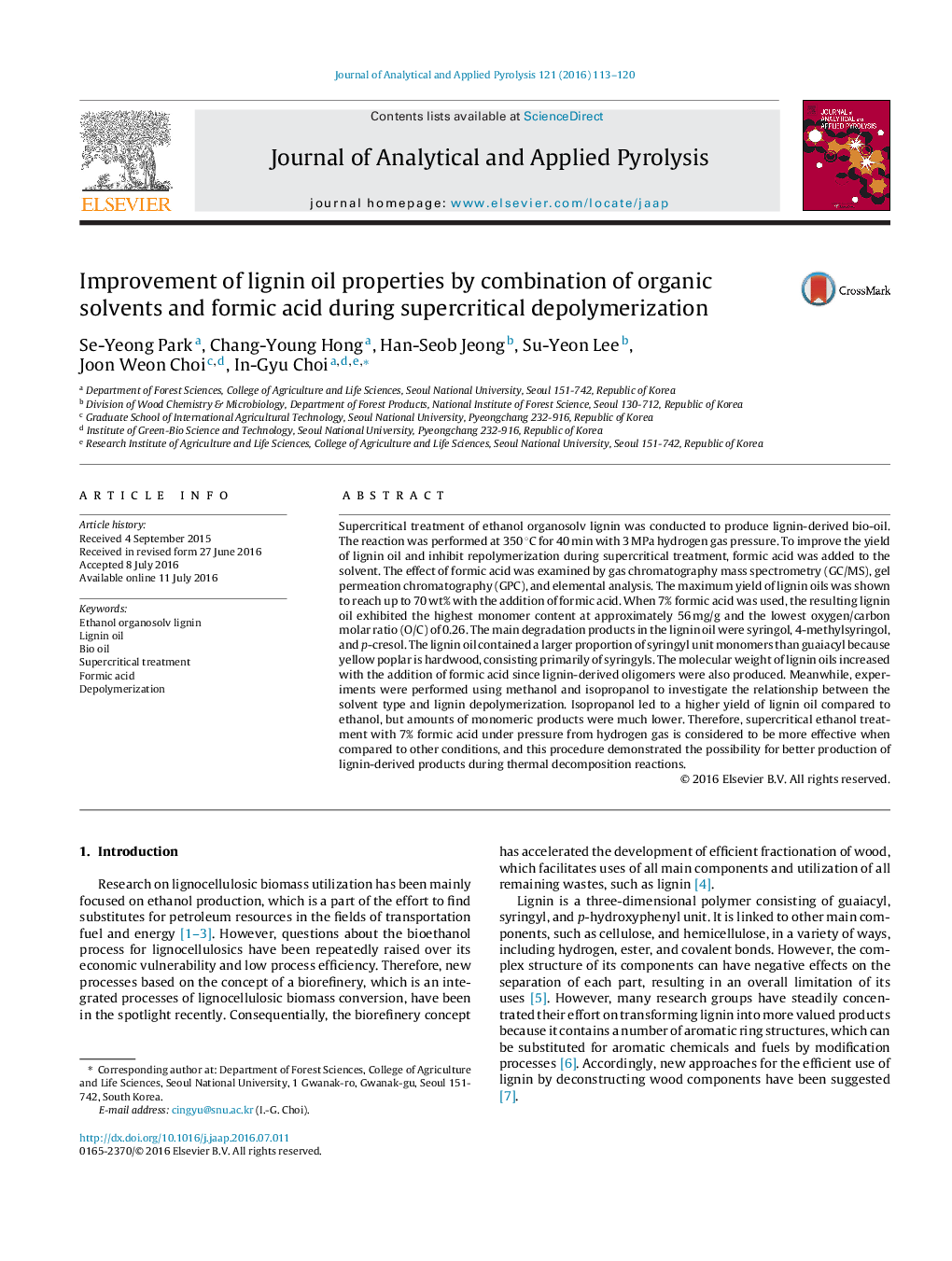| Article ID | Journal | Published Year | Pages | File Type |
|---|---|---|---|---|
| 5134713 | Journal of Analytical and Applied Pyrolysis | 2016 | 8 Pages |
â¢Organosolv lignin was depolymerized with organic solvents in supercritical fluid.â¢Addition of formic acid affected lignin oil yield, O/C value and molecular weight.â¢Formic acid was used as hydrogen donor with organic solvent by self-decomposition.â¢Lignin oil in ethanol with 7% formic acid showed the best structural properties.
Supercritical treatment of ethanol organosolv lignin was conducted to produce lignin-derived bio-oil. The reaction was performed at 350 °C for 40 min with 3 MPa hydrogen gas pressure. To improve the yield of lignin oil and inhibit repolymerization during supercritical treatment, formic acid was added to the solvent. The effect of formic acid was examined by gas chromatography mass spectrometry (GC/MS), gel permeation chromatography (GPC), and elemental analysis. The maximum yield of lignin oils was shown to reach up to 70 wt% with the addition of formic acid. When 7% formic acid was used, the resulting lignin oil exhibited the highest monomer content at approximately 56 mg/g and the lowest oxygen/carbon molar ratio (O/C) of 0.26. The main degradation products in the lignin oil were syringol, 4-methylsyringol, and p-cresol. The lignin oil contained a larger proportion of syringyl unit monomers than guaiacyl because yellow poplar is hardwood, consisting primarily of syringyls. The molecular weight of lignin oils increased with the addition of formic acid since lignin-derived oligomers were also produced. Meanwhile, experiments were performed using methanol and isopropanol to investigate the relationship between the solvent type and lignin depolymerization. Isopropanol led to a higher yield of lignin oil compared to ethanol, but amounts of monomeric products were much lower. Therefore, supercritical ethanol treatment with 7% formic acid under pressure from hydrogen gas is considered to be more effective when compared to other conditions, and this procedure demonstrated the possibility for better production of lignin-derived products during thermal decomposition reactions.
